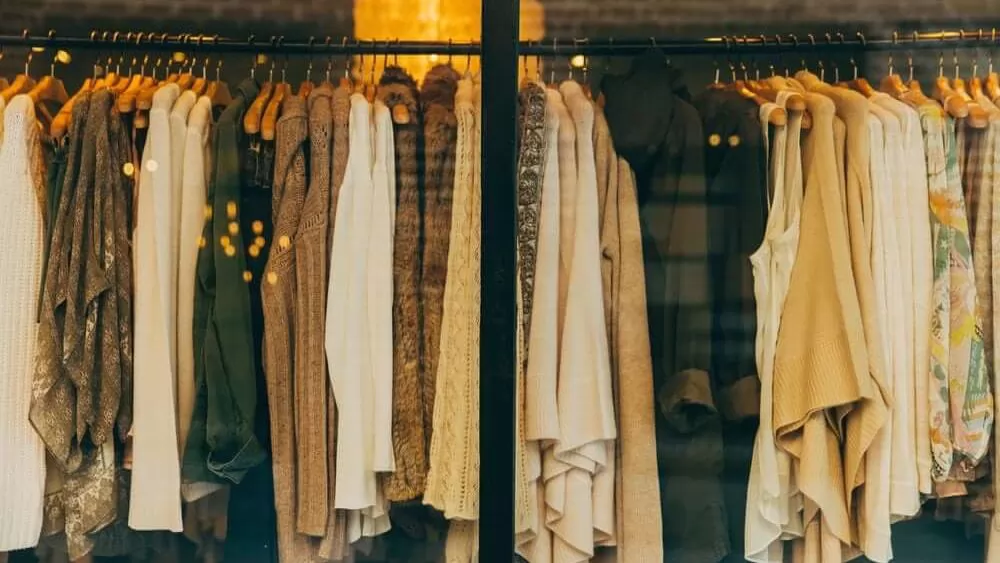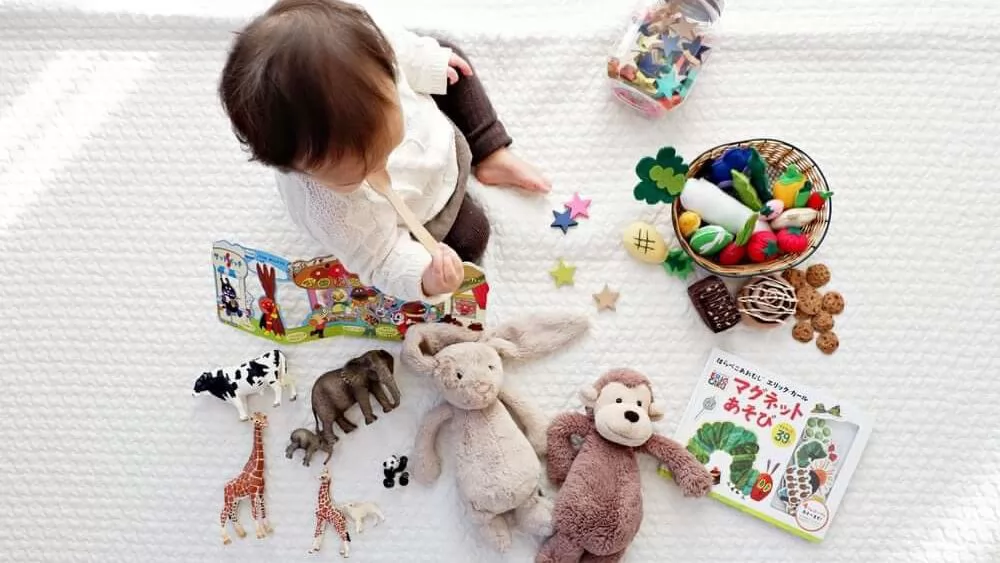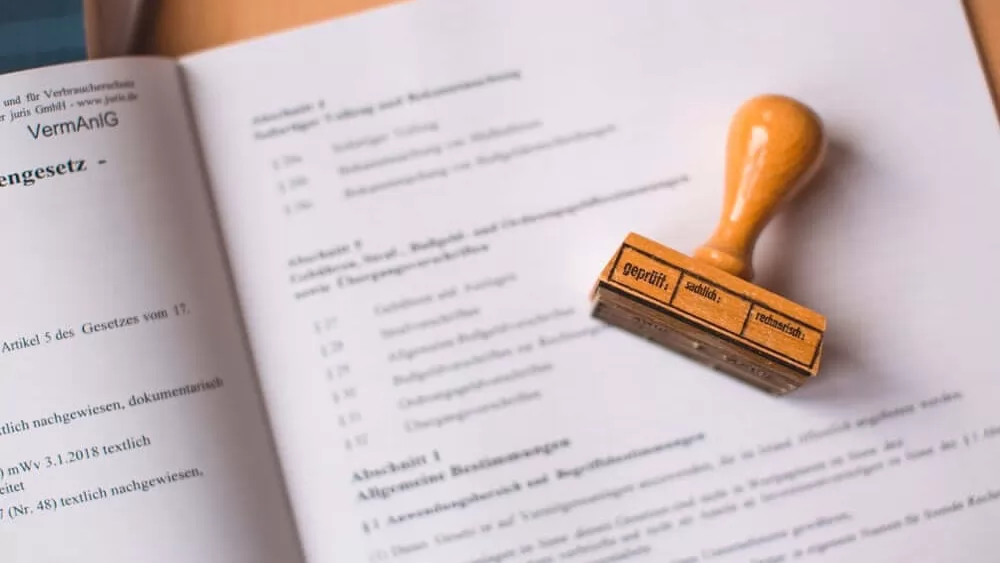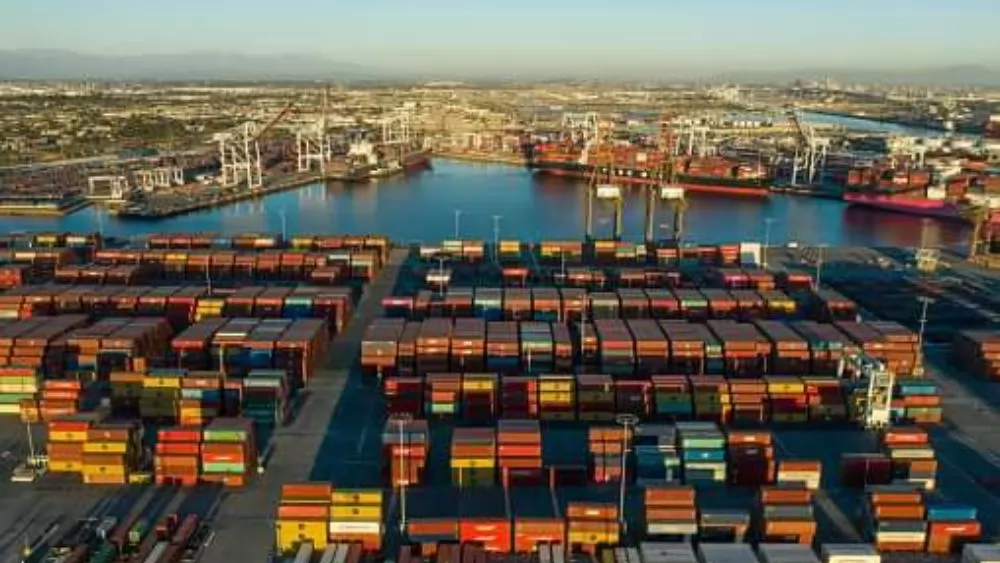Planning to import products from China to Australia? In this guide, we cover the basics that all Australian importers must know about product safety standards, labeling requirements, shipping options, and, the China–Australia Free Trade Agreement (ChAFTA).
In addition, you’ll also learn how to calculate import duties, import processing charges, and Goods and Services Tax (GST) when importing from China.
Overview |
1. Understand the China-Australia Free Trade Agreement
As we know, China is now Australia’s largest trading partner. Both nations have signed ChAFTA (China-Australia Free Trade Agreement) on 20 December 2015.
This agreement includes many benefits for the importers. It gives Australian companies greater access to the Chinese market.
Likewise, Australian importers get reasonable concessions on tariffs. It gives them greater market access to explore different products in China.
After this agreement, no import duties will be applied to specific goods imported from China to Australia.
To gain preferred treatment under ChAFTA, you must present a ‘certificate of origin.’
In short, this agreement is improving the trade relationship between both countries. It can become a significant driver to boost economic growth.
2. What Types of Products Can You Import from China to Australia

There are products that you could easily sell elsewhere, and those products may probably not be popular in Australian markets for some reason.
You can do extensive Australian market research to understand your demography. And discover the products and services that are in high demand.
You could also compare Australian market trends to find products that have the potential to perform excellently.
Here are some hot products imported from China:
- footwear
- toys
- sports equipment
- games
- furniture
- apparel
- Machines
- Some food items
- electronics
Picking a niche from a wide range of products is difficult in any e-commerce business. But it’s worthwhile.
Importing clothing from China to Australia

China is recognized as the best in textile exports. You can buy uniforms in bulk for the students of Australian schools.
I have seen many Australian people buy clothes for uniforms. Why not target it, then?
Chinese suppliers export these products to all parts of the world.
Importing clothes from China to Australia has few regulations. The country does not allow exporting clothes containing AZO dyes and formaldehyde within its borders.
Importing electronics from China to Australia

Many Australian business owners worry about the endless regulations involved in importing electronics from China.
Even with the huge demand, they avoid importing electronics altogether.
Australian companies can reap high profits by importing wholesale electronics from China.
Electronics manufactured and coupled in China are used worldwide. These include televisions, radios, refrigerators, telephones, etc.
This is the best way to make a profit. I think I can try it now!
Import toys from China to Australia

Guess the Chinese toy manufacturing industry? I believe you will be 100% satisfied. China is one of the world's largest exporters of toys.
You can import different types of Chinese toys in bulk, such as puzzles, games, baby toys, etc., using sea freight.
Since the main consumers are babies, there are strict guidelines and standards for imported toys.
In addition, the duty on toys is also lower. The main issues you may encounter when importing toys from China are safety and certification.
Import ship from China to Australia

Chinese manufacturers make solid ships with many unique designs to meet the needs of the world. The durability of these boats makes them the first choice for navigating Sydney's rivers.
They offer seamless handling, are easy to clean and maintain, and retain their good looks for years to come.
The Australian Quarantine Customs controls the import of ships, and there are many regulations involved.
3. Australian Product Safety Standards

All consumer products you import must be safe and comply with the consumer regulations of the Australian Consumer Law.
The sale of prohibited products is prohibited, even if there is a demand for the product. Additionally, you need to ensure that your imported products comply with the applicable mandatory standards.
What is the AS/NZS standard?
It is an abbreviation for Australia/New Zealand Standard. These guidelines apply to Australia and New Zealand and are similar to US and EU standards.
AS/NZS applies to product safety regulations. For example, vessels are subject to the Trade Practices Regulations 2014.
It requires domestic vessel manufacturers and importers to comply with the guidelines of AS/NZS 3004.2:2014.
These standards constitute technical prerequisites spanning safety, testing and performance quality.
Make sure you know which AS/NZS standards apply to your product.
Conversely, not all AS/NZS standards are safety-related. For example, the Textile Care Labeling Guidelines only set standards for clothing labels.
Which products are regulated in Australia?
Many product categories are designed to comply with a set of mandatory product standards during export. Even if there are voluntary standards, we will focus on mandatory standards when exporting.
We provide a list of regulated product categories in Australia and New Zealand.
See below:
- Animals and Agriculture
- bike
- Baby & Nursery
- ships and ocean
- Clothing and Accessories
- educational supplies
- Fire and Flammables
- Grocery
- Furniture, Home Furnishings & Window Treatments
- gas and appliances
- Hardware building materials
- Health and Cosmetics
- Daily Chemicals
- Novelties
- Spas, Pools and Swimming
- Sports and leisure
- Tobacco and smoking accessories
- Toy
- arms
To find all applicable AS/NZS standards and mandatory product safety regulations, visit Product Safety Australia.
How do I know which AS/NZS safety standards apply to my product?
After you have identified the categories that apply to your imports, you will find an outline of regulations that include AS/NZS standards.
It also contains a list of all exclusions, safety labels, related recalls and required documents.
Some product regulations are stricter than others. For example, children's toys have strict guidelines, while textiles are popular;
Therefore, they only apply to the mandatory care labeling requirements.
In addition, some mandatory safety standards apply to a broad range of Chinese products, while others apply to specific products.
4. Necessary Documents Required When Importing Goods from China

Certificate of origin
When it comes to international trade documents, certificates of origin rank first. It is an official document issued by the government to confirm that the goods being traded were manufactured or purchased in a country or a specific region.
Many countries, such as Australia, grant preferential treatment to some countries, possibly exempting them from import duties.
Developed countries often use such incentives to support developing countries in Asia and elsewhere, sometimes as part of free trade agreements.
In that case, I will get a certificate of origin to enjoy such incentives. It also reduces my import costs from China to Australia.
Details to accompany your Certificate of Origin include:
- Importer (Consignee)
- Manufacturer/Exporter
- Transportation method and route
- Product Description
- quantity
Import permit
Import permits can be issued by specific agencies that oversee the goods you wish to import. The total number of government agencies authorized to issue import licenses is 15.
While an import license provides financial and commercial details about the goods and the import process, it also provides information on:
- importer
- exporter
- country of origin
- Arrival and cargo clearance
- supplier or manufacturer
- Taxes and Tax Classifications
- Net Gross Weight and Quantity
- an accurate description of the product
- total price
- Incoterms
- payment method
- shipper
- Receiver
- Incoterms
- Product Category
- notifying party
- ship number
- port of loading
- Receiving/delivery location
- Container Number
- Product Description
- net weight
- size/volume
Bill of lading (BL) or air waybill
As a certificate of origin, the bill of lading is considered essential and is issued by the freight forwarder. It is a document that proves that the shipping company has received the goods.
Receipts come with a unique number for online tracking of shipments.
The information displayed on the bill of lading is:
- shipper
- Receiver
- Incoterms
- Product Category
- notifying party
- ship number
- port of loading
- Receiving/delivery location
- Container Number
- Product Description
- net weight
- size/volume
Commercial invoice
The commercial invoice states the customs value of the shipment for calculation of Australian import duties, GST and other import duties.
The details provided on the commercial invoice include:
- Importer (Consignee)
- Product Description
- customs code
- quantity
- unit value
- total value
- packing list
This list provides details about the product, quantity, and number of cartons in the shipment.
A freight forwarder's tracking tool shows the shipment is on its way.
SAC customs declaration/import declaration
When Australian companies import goods from China, they also need to fill in the import declaration form.
The function of the import declaration is to inform the customs about the imported goods, the importer, the mode of transportation, the tariff classification and the customs value.
There are two types of import declarations:
- Self-Assessed Clearance (SAC Declaration) applies to imported goods with a value below AUD1,000
- N10 import declaration is applicable to the value exceeding AUD1,00
Australian importers need only submit the documents that apply to them.
For more information on import declarations and instructions on how to lodge them, see the instructions from the Australian Border Force.
Packaging declaration (ocean only)
The packaging declaration contains information about the packaging materials used in the shipment.
If the packaging material contains wood, straw or bark, they have the potential to harbor pests or fungi due to long sea transport times.
To prevent this from happening, importers must fumigate the at-risk packaging material and present the fumigation certificate to the authorities on the packing declaration.
A packing declaration is only required for sea shipments.
5. Import Tax (Tariff) from China to Australia

Import duties are common in Australia and other countries. Australian businesses importing goods from China are required to pay import duties on consignments.
Free trade agreements cover some products from paying additional fees.
However, certain import duties and charges only apply to certain goods imported into Australia.
Australian businesses importing goods from China will encounter the following import duties.
- Processing Fees: These duties apply to all Chinese market shipments.
- Goods and Services Tax (GST): 10% GST applies to all goods.
- Excise Duty: It includes goods that contain tobacco, alcohol or fuel.
Australian businesses can also claim tariff concessions. The average tariff rate for most products imported into Australia from China is 0%.
China's tariff rate on imports from Australia
These are taxes levied on the import and export of goods. In most cases, the value of the imported goods determines the tariff rate.
Tax rates range from 0% to 10%, but most Chinese imports are subject to a 5% tax.
Of course, these changes were made after the agreement date. Click here to view a full list of Australian Tariff Rates and HS Codes.
Below is a bar chart of the tariff rates you can consider when closing your account.
| HS Code | Description | Duty Rate |
|---|---|---|
| 5201.00.00 | COTTON, NOT CARDED OR COMBED | 0% |
| 5204.11.00 | COTTON SEWING THREAD – – Containing 85% or more by weight of cotton | 5% |
| 5205.11.90 | COTTON YARN (OTHER THAN SEWINGTHREAD), CONTAINING 85% OR MORE BYWEIGHT OF COTTON, NOT PUT UP FOR RETAILSALE:- – – Other | 5%DC:5% |
Example of import duty calculation
Here we will do a quick calculation using assumed commodity values to determine import duties.
You must note that the duty is 5% of the total value of the imported goods converted into Australian dollars. So it means it is calculated using custom values.
- Import duty = XX% x Customs Value
Assuming the customs value of the goods is AUD 20,000, an import duty of 5% is payable.
- Import duty = 5% × 20,000 = AU$1,000
Who can do the import declaration?
Importers or agents can make import declarations, providing Australian Customs with information about imported goods.
This document contains the details of the importer, how the product will be shipped, the customs value and the tariff classification.
Additionally, if you wish to clear customs of goods with a value in excess of A$1,000, an import declaration will be required in addition to duties, taxes and other applicable charges.
How to legally reduce import duties?
The only legal way to reduce import duties is to reduce the value of the duties.
The reduced order size will guarantee a lower import value, which directly reduces taxable import duties.
In Australian customs, the duty rate is calculated at 5% of the customs value. The parameters that make up the customs value are:
- total product cost
- transport to port of loading
- Export customs clearance fee
- Payment to suppliers for services (for example, product development and design)
- Product samples, molds and other tools
- Shipping and shipping insurance not included
There are some exemptions and discounts from the import duties listed above. Australia signed a free trade agreement with China in 2015. The agreement removes some barriers to international trade and investment. Check if your shipment falls under a free trade agreement.
Tariff concessions are sometimes made to allow goods to enter Australia duty-free or at a reduced price. It is also possible to defer the payment of duties. These concessions generally apply to imported goods for which there are no Australian-produced substitutes. More information on the Tariff Concession System.
Due to the free trade agreement between Australia and China, the average tariff rate on most of our products from China is now effectively 0%.
6. GST Guidelines for Imported Goods from China in Australia
What are goods and services tax (GST) rates?
Australia's GST is a 10% tax on imported goods. Some products such as housing, healthcare, wine and food are exempt from this duty when imported.
China charges the same tax rate on Australian imports like every other country in the world; it remains the same regardless of the country of origin.
How do I calculate how much GST I need to pay?
Australian importers can use the following information to calculate GST imposed by the government:
- Import tariffs
- product value
- Shipping fee
- shipping insurance
Assuming the value of the item is AUD 15,000 and the import duty is 5%, you will need to pay AUD 1,000 and AUD 100 for shipping and freight insurance; respectively, your GST will be 10% of the value.
- GST = 10% x (15,000 + 750 + 1,000 + 100) = AUD 1,685.
How can I reduce the GST I need to pay?
The only legal means of reducing GST is to reduce the value of generally taxable imports.
Australian importers can pay lower GST by reducing the number of shipments, using sea freight instead of air freight, negotiating with suppliers, and stacking several LCL shipments into one FCL shipment.
I have the same approach to reduce GST cost. This is a legal and safe way.
Some importers require suppliers to record a value below the actual cost of imports; it is illegal to underreport the value of taxable imports.
During an audit of the company by the Australian Taxation Office, they will discover your illegal bids, leading to severe sanctions.
When do I pay GST on goods imported from China?
GST is due the moment your goods clear through Australian customs. Some freight forwarders are willing to take care of this to take the stress out of you.
7. Shipping from China to Australia

Sea freight is an important factor to consider when importing goods from China to the Australian market.
The supply chain and freight industry is important as it accounts for about 9% of Australia's GDP.
Shipping cost from China to Australia
Various factors can affect the cost of shipping from Australia to China and vice versa.
These factors may include import value, size, shipping method, factory to port shipping, export customs clearance, freight, insurance, port charges, domestic shipping, etc.
The main things to look out for when choosing a shipping company for trade are delivery time, affordability, and quality of service.
Shipping service from China to Australia
China offers low-price shopping privileges to Australian importers. But the affordability of Chinese products will be of no use if you spend the cash you save on shipping.
You can use the growing competition in the logistics industry to your advantage.
Many quality freight forwarding companies have sprung up, so you can easily work with one. You have many options; sea, air, rail, you name it!
Ocean freight
Most Australian exporters prefer this method of importing products from the Chinese market.
Finding a reliable ocean freight company will ensure you receive efficient service for all your shipping needs.
They are specifically designed to ship your products, regardless of the size, weight or shape of the shipment.
Your goods are delivered in the safest possible way. Additionally, your shipping company should handle customs agreements and documentation.
Air transport
You are importing into Australia and your supply may be behind schedule or experiencing certain issues; air freight may be an available option. This approach also applies to Australian exports.
Most air freight companies strictly monitor their operations to avoid delays or inconvenience to customers.
Additionally, this option gives you added peace of mind as there is virtually zero risk of the shipment being mishandled.
Rail freight
This mode of transportation utilizes trains and railways to move goods.
Locomotives haul freight trains on rail lines to carry freight from shippers to their intended destinations. Trains are used to transport bulk cargo.
Of course, Australia's rail freight guidelines differ from those of other countries.
China to Australia door to door sea freight
When you choose home delivery, the supplier ships directly to your home or warehouse. This is by far the best shipping option as it saves you most of the stress of importing.
This method is mostly used by online importers and eCommerce business owners.
Most China door-to-door shippers handle import duties, VAT, GST and other customs agreements.
8. Risks and Problems that May be Encountered When Importing Goods
No matter how profitable a business is, it takes some risk.
Imports from China to Australia are not exempt from customs; there are risks involved. Whether importing from China or exporting to China; we cannot ignore the risks involved.
However, being aware of these risks will give you the foresight to scale. These risks apply to Australian exports and imports.
Below are some of the risks involved in importing products into Australia.
language disability
Language plays a vital role in the eCommerce industry. Dealing with suppliers whose native language is not English can be difficult.
While some manufacturers in China understand English, the diversity of cultures and speaking styles can also lead to communication barriers.
The perfect solution is to hire an English-Chinese sourcing agent or translator with experience in international trade. They can easily forward your message to the manufacturer.
Supplier scam
Many Australian importers have been swindled by supplier scams during the trade. This usually happens when an importer believes in vague promises made by a "supposed" manufacturer.
Therefore, do extensive research on your suppliers before purchasing an item.
Check what kind of trade services they offer.
Quality issues
For me, nothing is more important than quality. It's also 100% critical to my buyers.
As an importer, it is vital to provide your buyers with quality products. Imported food and other items should be of good quality.
Therefore, receiving substandard shipments at any time can damage your business.
Also, most manufacturers probably won't approve your request for a refund, so you have to try to avoid that.
High price and cost
Buying a product at a premium price doesn't necessarily mean it's high-end quality.
Australian importers must understand that it takes time to find a quality manufacturer who can provide quality service at a reasonable price.
What should I do if I receive foreign currency?
Until recently, Australian businesses had 3 options for receiving payments from overseas customers:
- Deposit funds into a local Australian dollar account.
- Open a foreign currency account, usually at a bank
- Use a payment gateway such as PayPal, Braintree or Stripe
Unfortunately, these options are often fraught with fees, balance requirements, or substantial exchange rate markups.
In October 2017, Wise (formerly TransferWise) released multi-currency accounts in Australia. It allows you to receive, hold and transfer 27 different currencies.
A unique feature especially useful for businesses is the ability to provide local bank account details in USD, EUR, GBP, NZD, CAD or AUD. This makes it very easy to collect money from overseas customers.
Time consuming
The business climate is different in China and Australia. The Chinese place great value on partnerships and relationships.
If you have the funds, traveling to China to have a personal meeting with your suppliers can lead to better business relationships and thus keep you profitable as an importer.
However, if you don't have the time and money to travel, you can hire an international trade specialist to help you build that relationship.
Your product may be copied
Patents and trademarks cannot protect your product from piracy in this world.
Anyone who wants to copy your product can do so without legal consequences. I must avoid this situation. It's best to only deal with reliable manufacturers.
It also helps if you have a big customer with a big investment, because the supplier can't lose a big customer.
9. How to Find a Reliable Supplier for Your Import Business?

Every eCommerce business owner in the world needs a reliable supplier to import products from China or other countries.
The Chinese market is so big, you won't have a hard time finding one. As China is Australia's largest trading partner, many suppliers can export goods to Australia.
Don't you think it's time to look for a reliable supplier? Don't worry. I've listed some ways to find the best suppliers.
Trade show
Here you have the opportunity to chat with suppliers face to face.
During these trade shows, most Chinese companies are under one roof. Most of these shows take place in April.
So if you're planning to visit the country in April, you'll be attending at least one trade show.
Browse the market online
Online marketplaces give a huge boost to the Chinese economy.
Therefore, many Chinese businesses place their product listings on various online platforms, such as Alibaba.
Contact buying agent
The first task of a purchasing agent is to find reliable suppliers and exporters for your products. You can contact them via email to discuss your requirements.
In addition, purchasing agents provide comprehensive support throughout the entire purchasing process.
Agents also have in-depth knowledge about exporting goods to any country. Make sure to choose the right supplier based on his experience.
10. Conclusion
The Australian market has a huge demand for Chinese goods. Trade between Chinese exporters and Australian importers is at its peak after tariffs were lowered.
If you are importing goods from China into Australia, it is important to complete all legal formalities.
Be sure to research ChAFTA to learn where and how to save on import duties.
You may also consider engaging a Chinese sourcing agent who can export goods to Australia.
A reliable agent can connect you with Chinese exporters. Some agents will also instruct you on the tariff rates that apply to the product.



